The Church designed by the architect David Fernández Nogueira began construction in 2015 on a 3000m2 plot of recently developed land in the area of Novo Milladoiro, Ames, next to Santiago de Compostela. From the beginning it was intended to an aesthetic that would integrate the building into the environment in which it is located while at the same time being an artistic expression of our time.
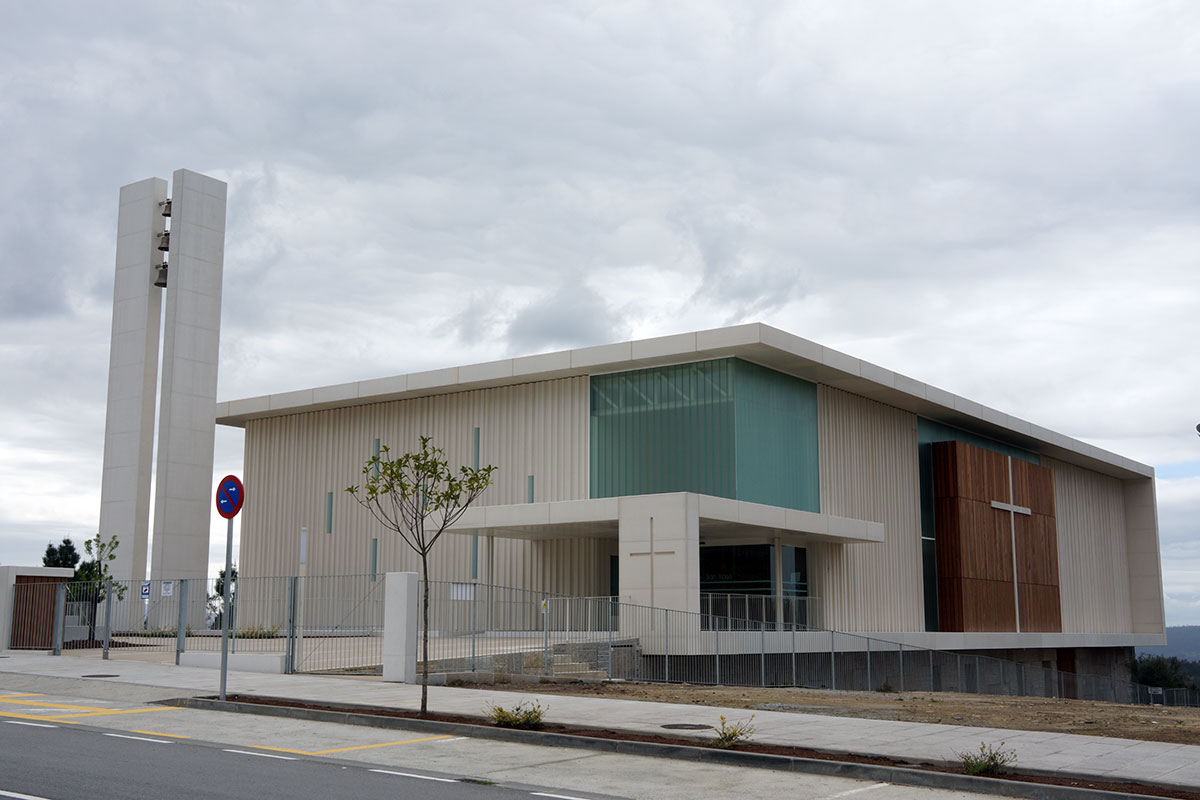
[Photographs from www.upmilladoiro.org]
The church, which began construction in 2015, is made of large-format precast concrete that speaks of a technological building that identifies with today's man, without false modernism or classicist interpretations. It consists of three floors that house different spaces for the activities of the parish community, including an open-air columbarium.
The interior of the building is characterized by the purity of its lines and the presence of natural light, which floods the diaphanous space, giving it great solemnity.. The church follows the design guidelines set by the Second Vatican Council in order to encourage the active participation of the faithful in the celebrations. The different elements that make up the sacred space are fully integrated and provide the church with chromatic unity, since they are exclusively white and wood.
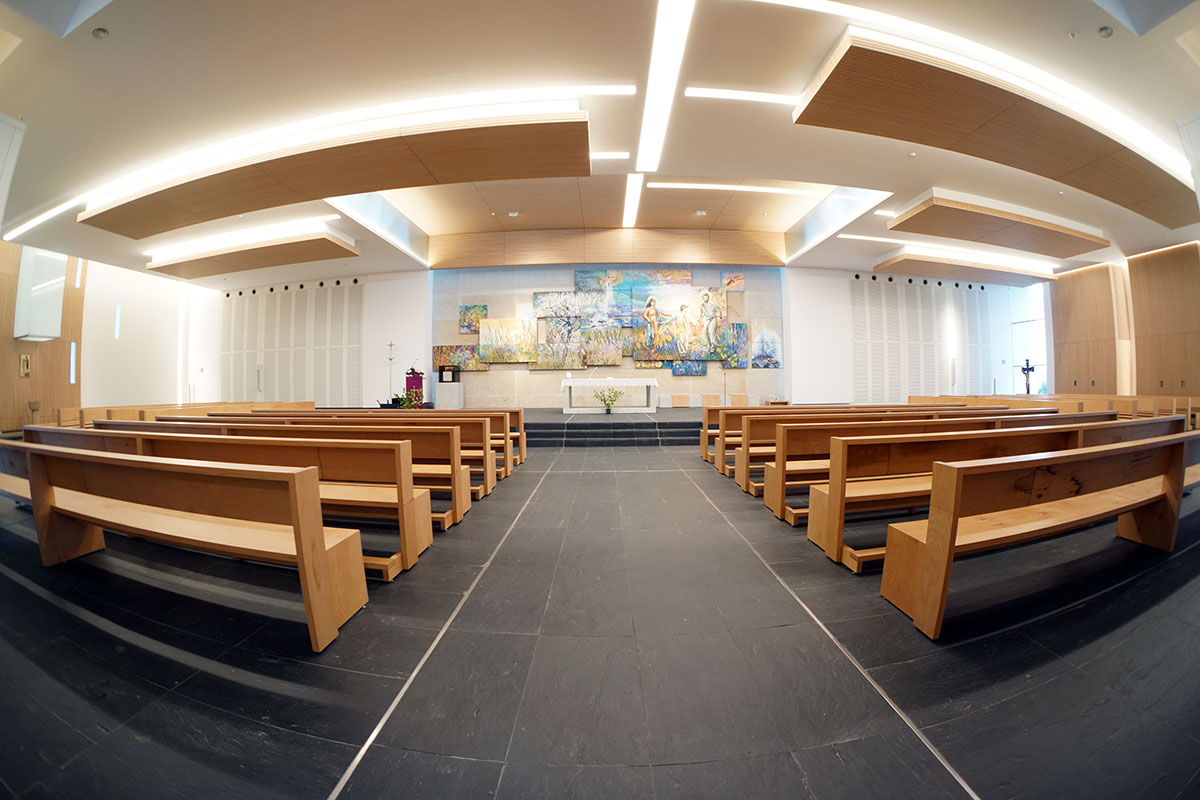
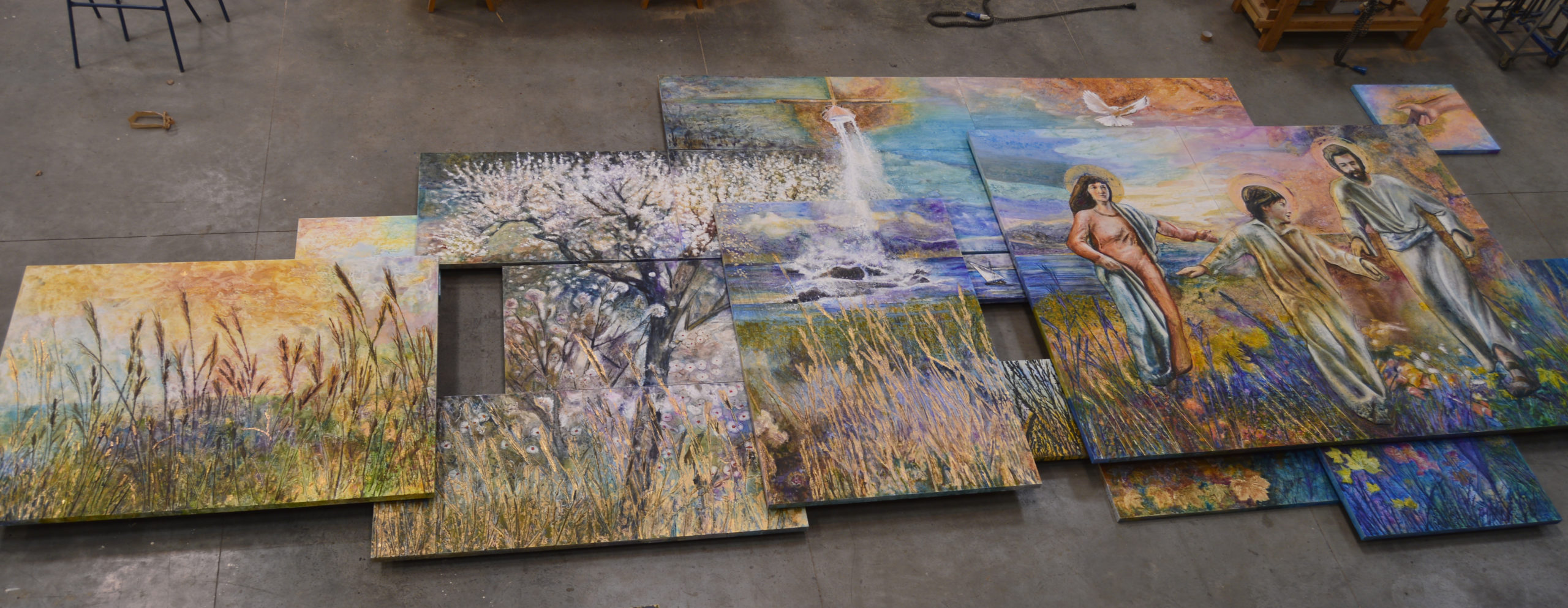
Granda has participated in the project with the design and elaboration of a 42m2 mural altarpiece, formed by superimposed wooden panels. The work, in the form of a large mosaic, occupies the entire wall of the presbytery, forming a dynamic altarpiece. The composition of superimposed panels, the light, color and textures that form it, make it a changing work throughout the day and depending on the point of view from which it is contemplated.. It is a large scene of the Holy Family running through the countryside, an endearing and close image with which young families in the neighborhood can identify, which is in turn loaded with Eucharistic liturgical symbols.
Fermín, painter of Arte Granda, defines it as "a play of matter, which is placed by itself to form an enormous colorful work of art.". He tells it while he picks up the acrylics he has used to capture a wide range of shades and gradients that fill the work with color and dynamism.
The Trinity of the Earth
The composition, located on the wall of the presbytery, contrasts chromatically with the interior of the church. The vividness of the colors gives great expressiveness to the work, which directs all eyes to the representation of Jesus, Joseph and Mary, the Trinity of the Earth, in a joyful and close attitude that radically breaks with the representations of the Holy Family that we have inherited from tradition.
The central point of the altarpiece is undoubtedly this overall image in which attention is inevitably diverted to the faces, full of expressiveness and a vitality that brings the characters closer, matching them to the Christian of today. The figure of St. Joseph marks the axis of the seat, as a representation of the priest, father of the family of the ecclesial community.
The Holy Spirit
Above the whole of the Holy Family, illuminated by the rays of the setting sun, flies a dove. It is a symbol of the Holy Spirit bathed in the light of the grace of his gifts and fruits.
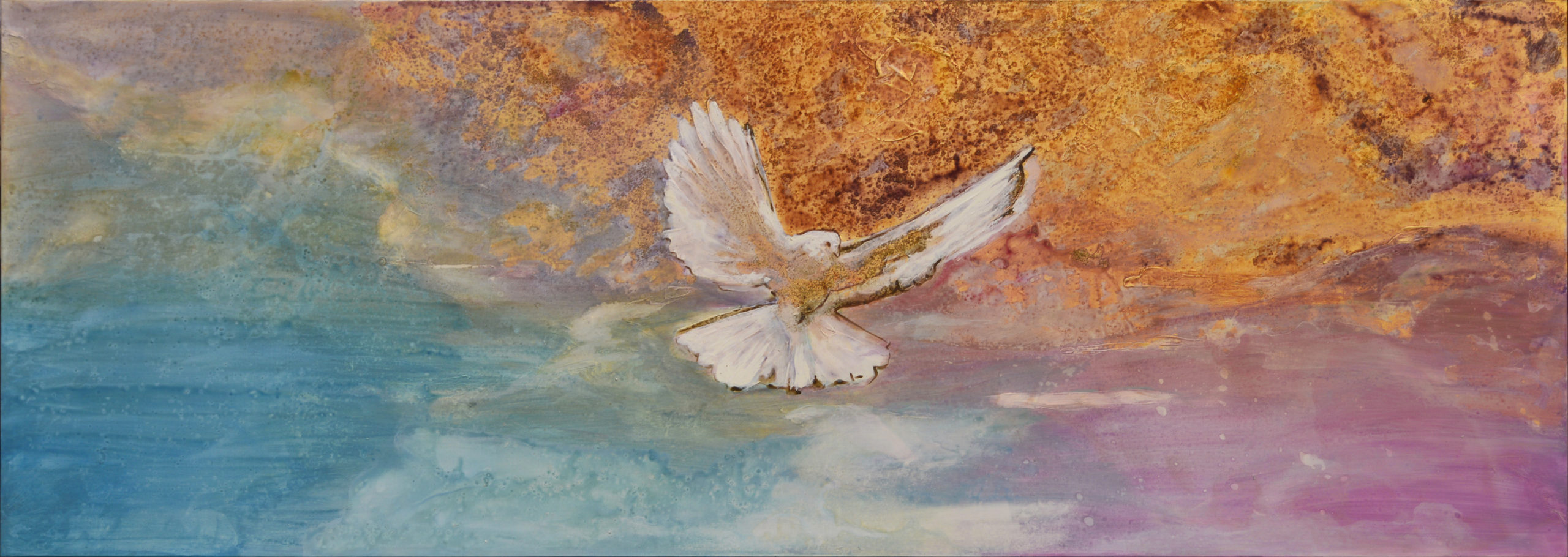
The cross and the shell
Marking the axis of the altar, the central element of the church, are represented a golden cross in the center of which is a shell of Santiago, a fountain of water that spills and splashes when it hits the rocks of the sea, painted on the lower panel. This symbol refers to the grace of Baptism, the sacrament that opens the doors of the Church and erases original sin. The intention here is to emphasize that this grace is given to Christians by the sacrifice of Christ on the Cross and that it is actualized in each Eucharist on the altar.
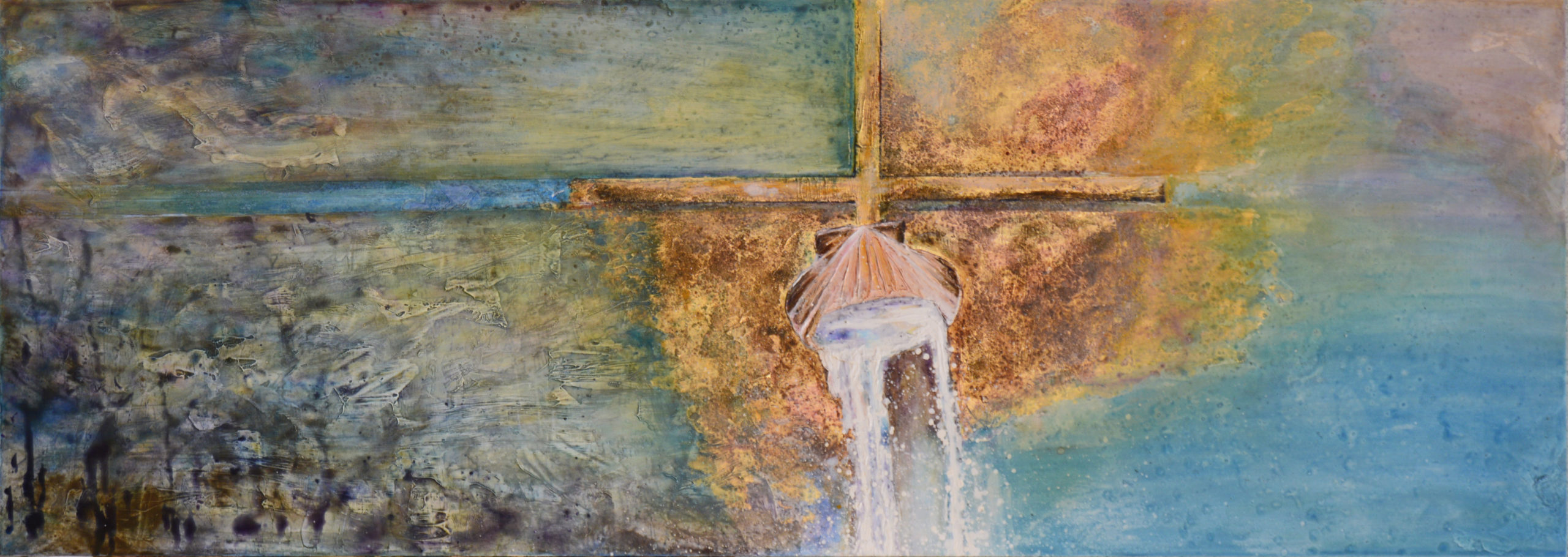
The almond tree
Saint Joseph is traditionally represented with an almond tree. This attribute has its origin in the apocryphal gospels, where the election of the spouse for the Virgin is related. According to these, a man from each tribe of Israel was summoned to the temple, each carrying a rod which he was to lay on the altar. When the priest of the temple entered the Sancta Santorum, it is said that an angel took St. Joseph's rod and it blossomed, as a sign that he was the one chosen to betroth the Virgin. The almond tree in bloom in the middle of the countryside landscape, makes reference in Christian symbolism to this fact and is a symbol, in turn, of the purity and chastity of St. Joseph.
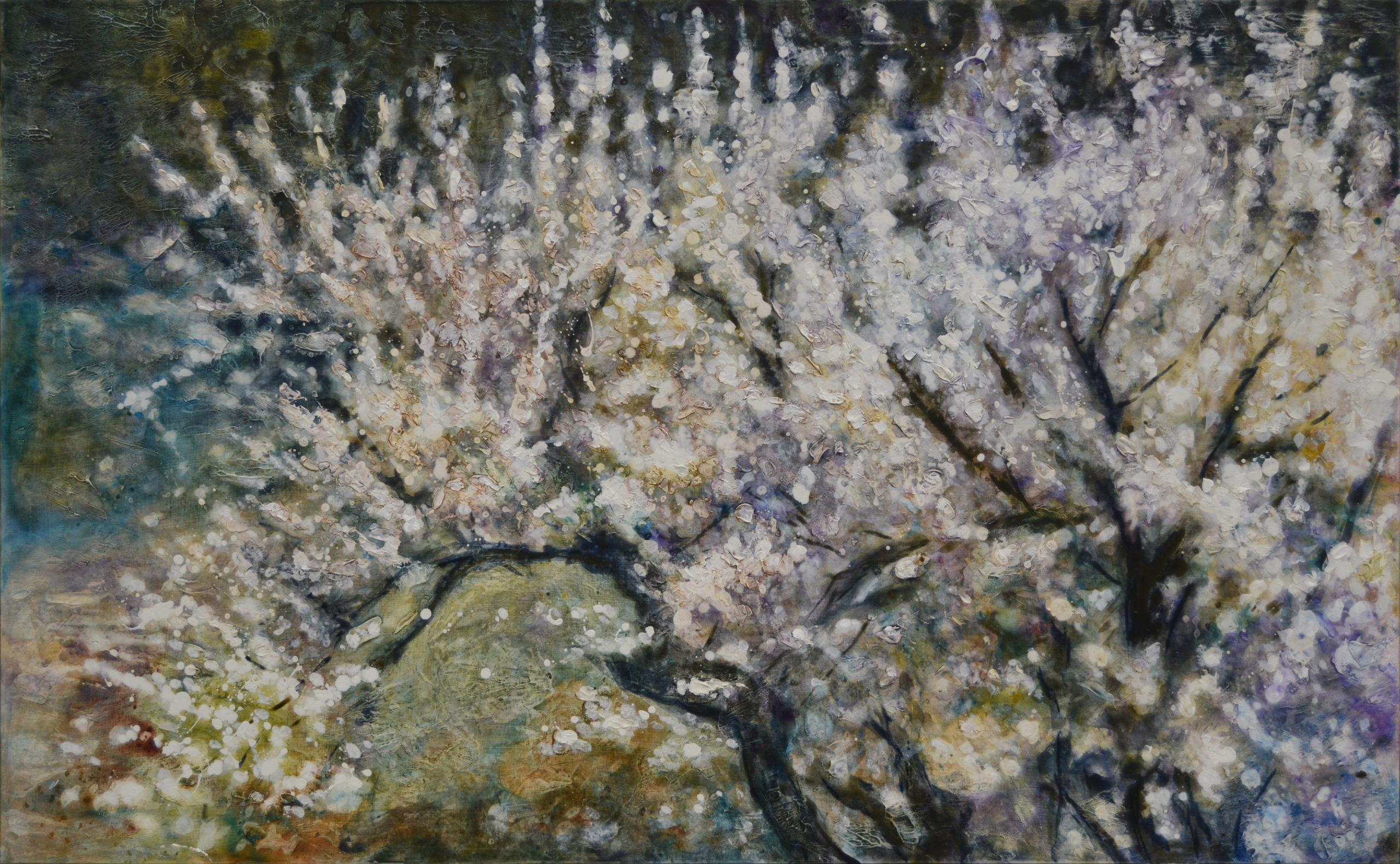
The food of the word
The ears of wheat are a conductive element in the whole composition. This panel of ears of wheat marks the axis of the ambo, the place from which the Word is proclaimed, which is food for the soul as wheat is food for the body.
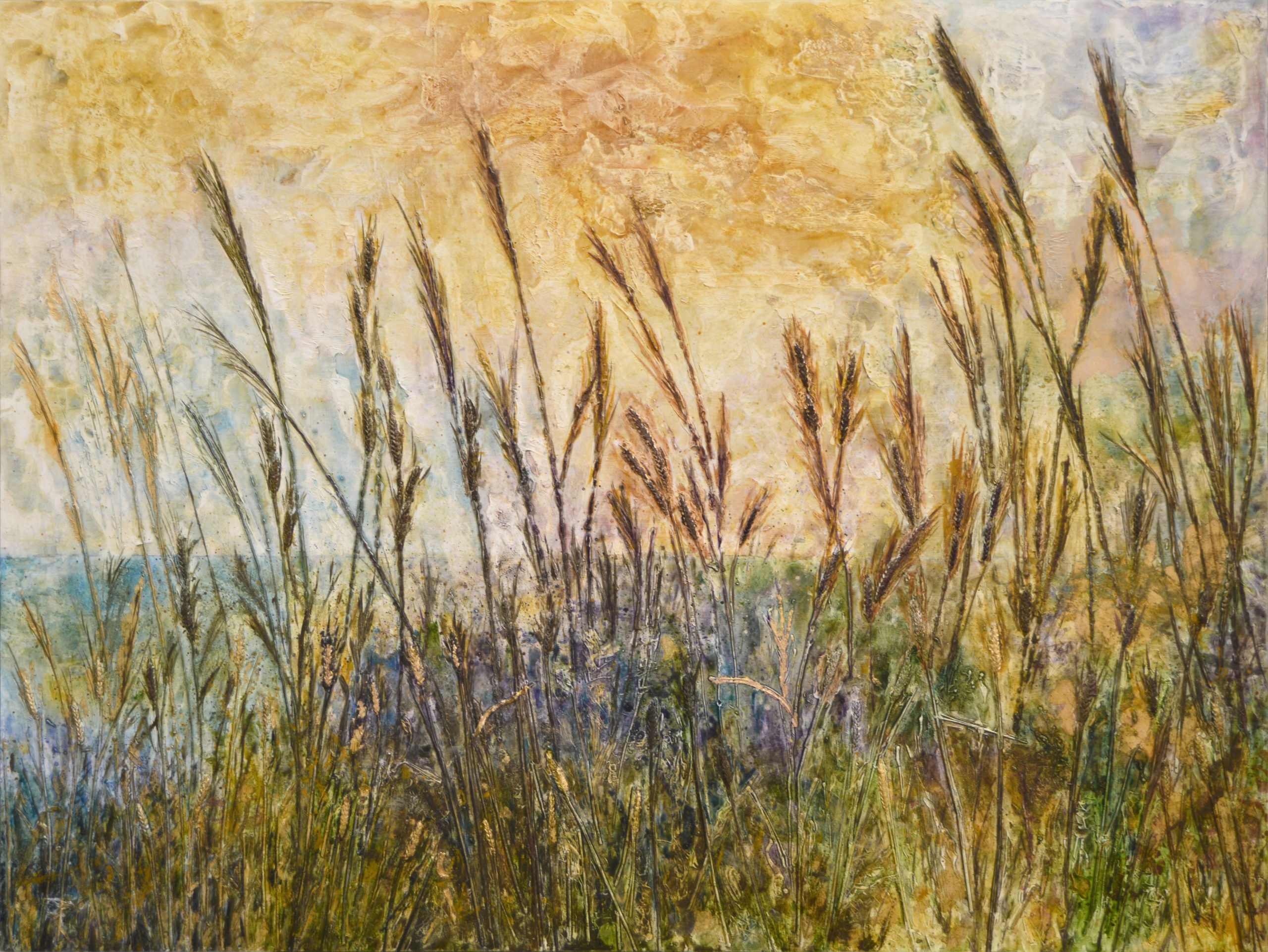
Eucharistic food
The golden ears of corn in the evening sun and the leafy vine represent the nourishment of the Eucharist: bread and wine that become the body and blood of Christ. This panel marks the space destined for the tabernacle, the place that houses the sacramental species.
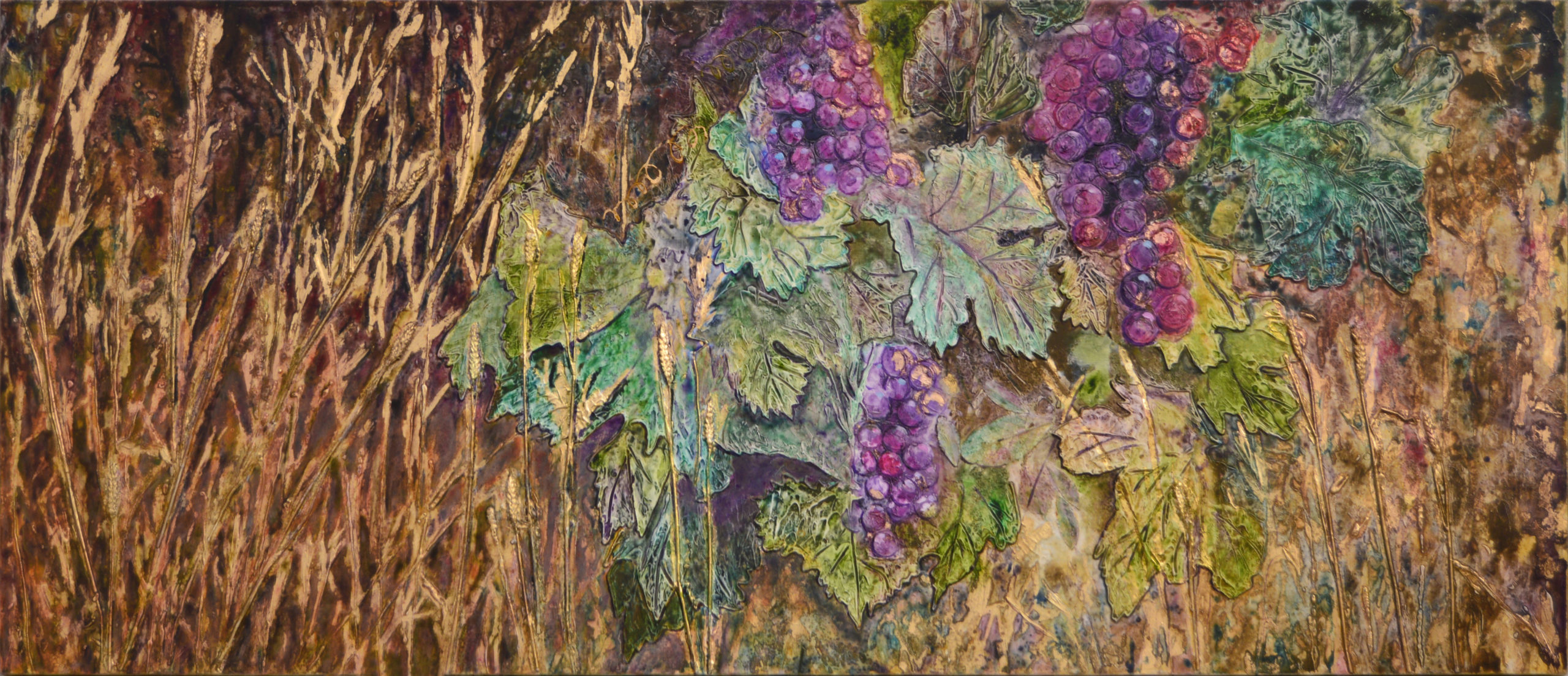
The right hand of God
In the upper right corner we find a representation of God's hand in an attitude of blessing over the Holy Family. This element marks the diagonal of the altarpiece and completes, together with the infant Jesus and the dove, the representation of the Trinity of heaven.
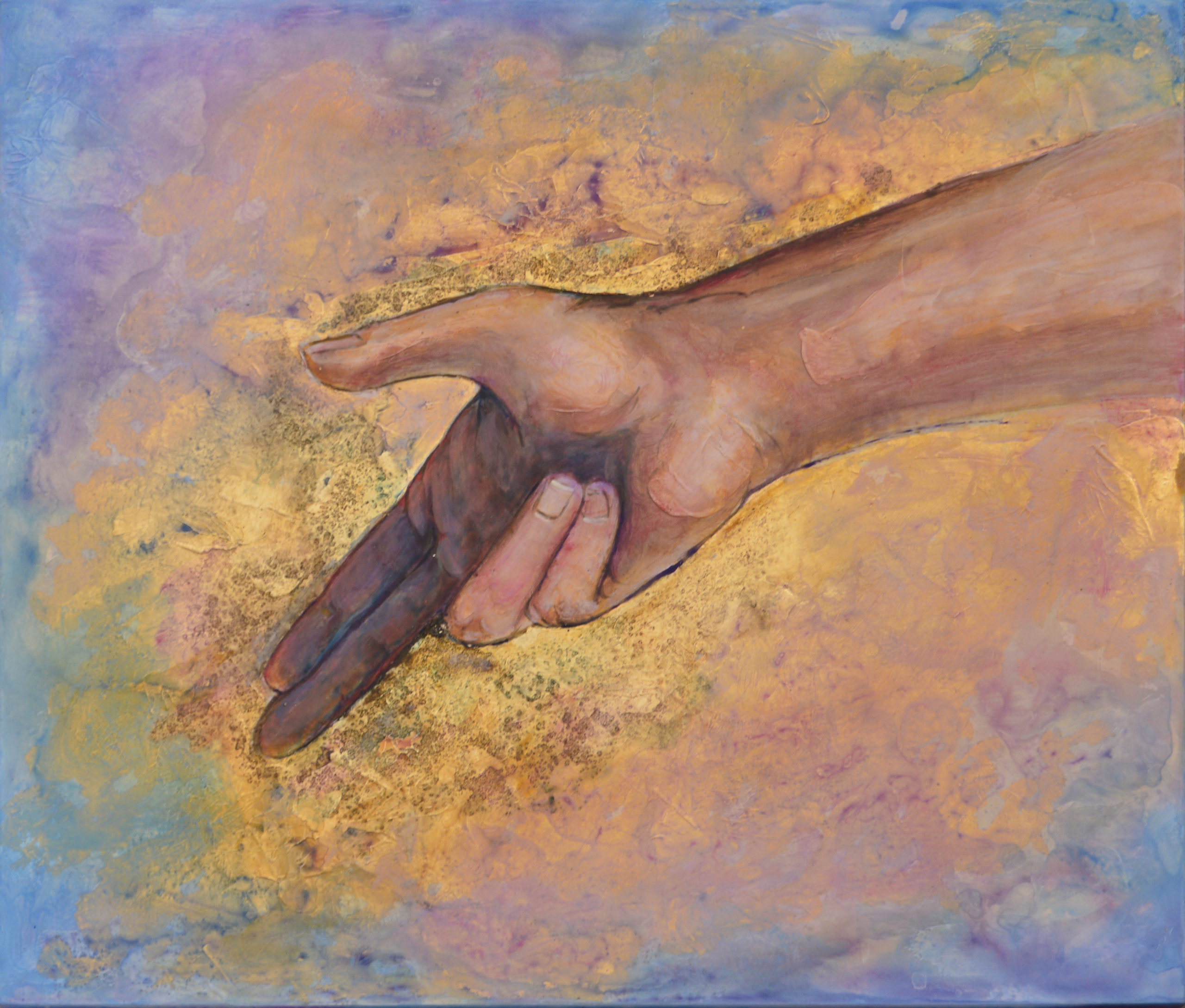
Water
Finally we find another element, which closes the altarpiece on the right side: a wave of the sea that bursts with force. This representation is a symbol of the purification of the soul and is closely related to the Galician landscape, which has about 1500 km of coastline and the culture of the area, where the sea is characterized by its beauty and bravery. This fragment is painted directly on two granite slabs, of the same type as the cladding of the presbytery, thus emphasizing the integration between architecture and painting.
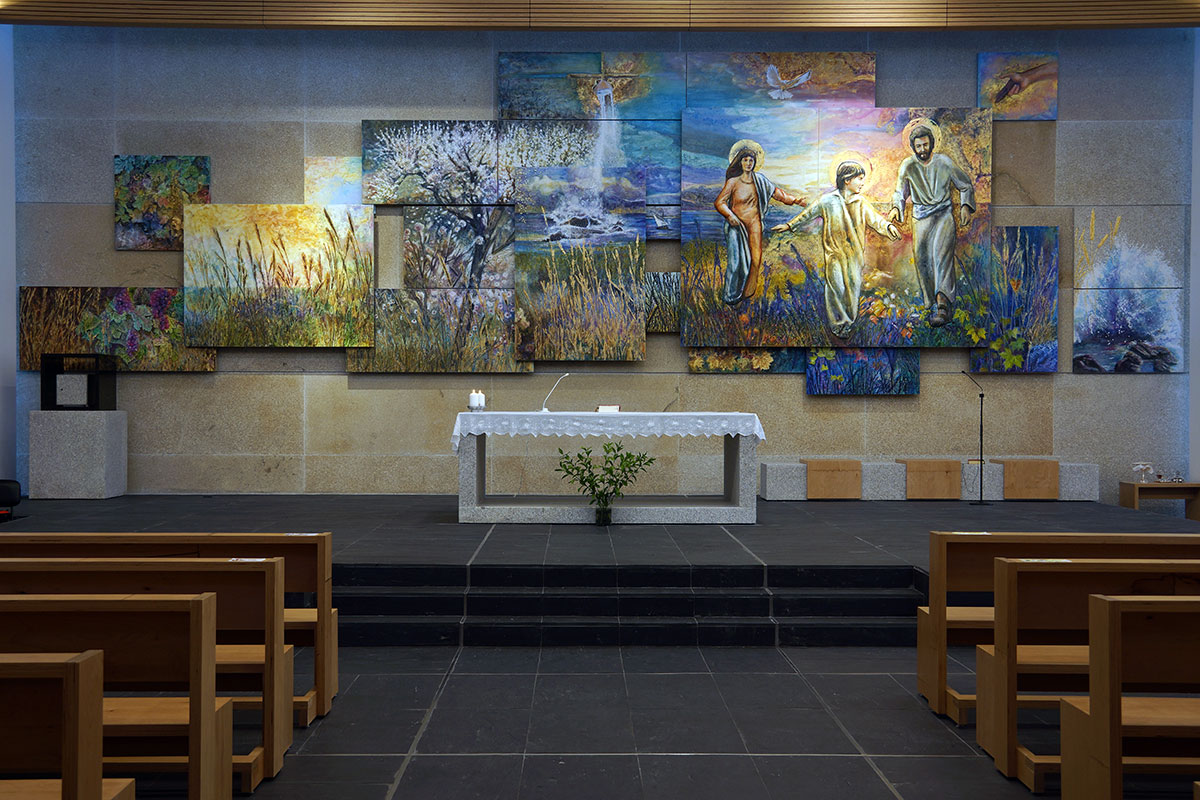
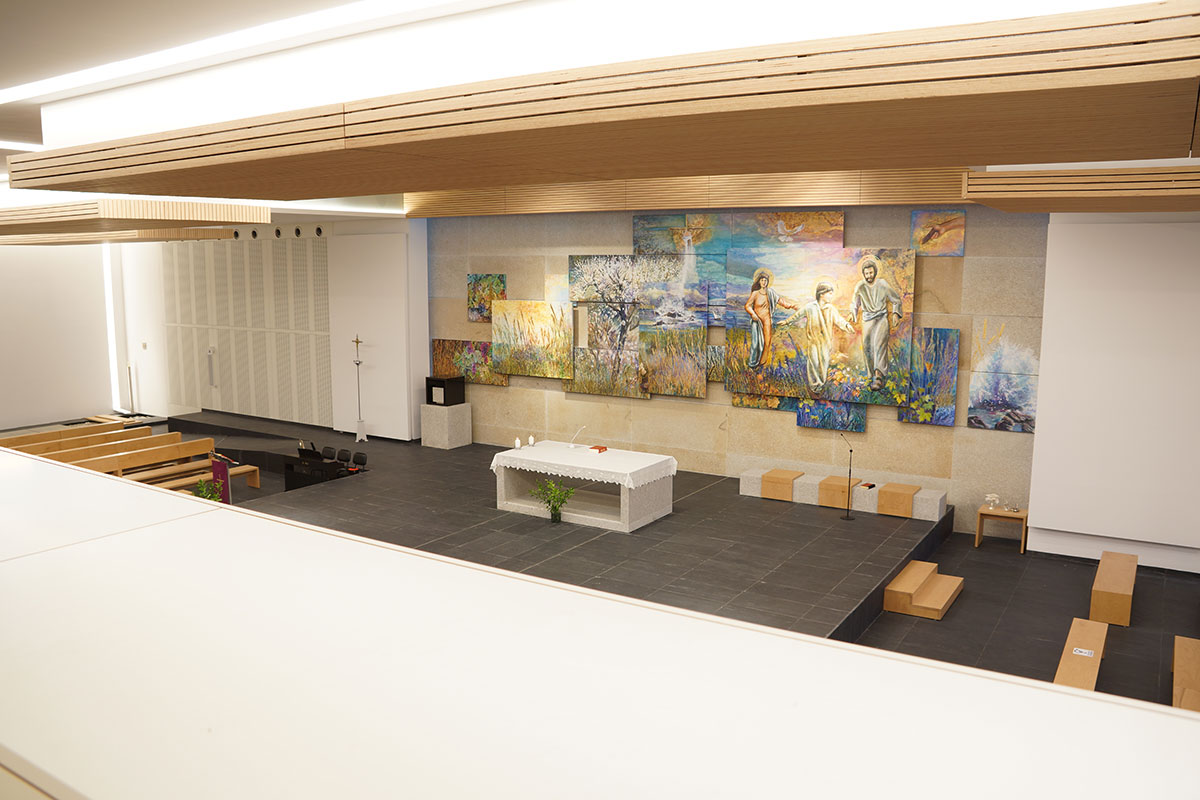
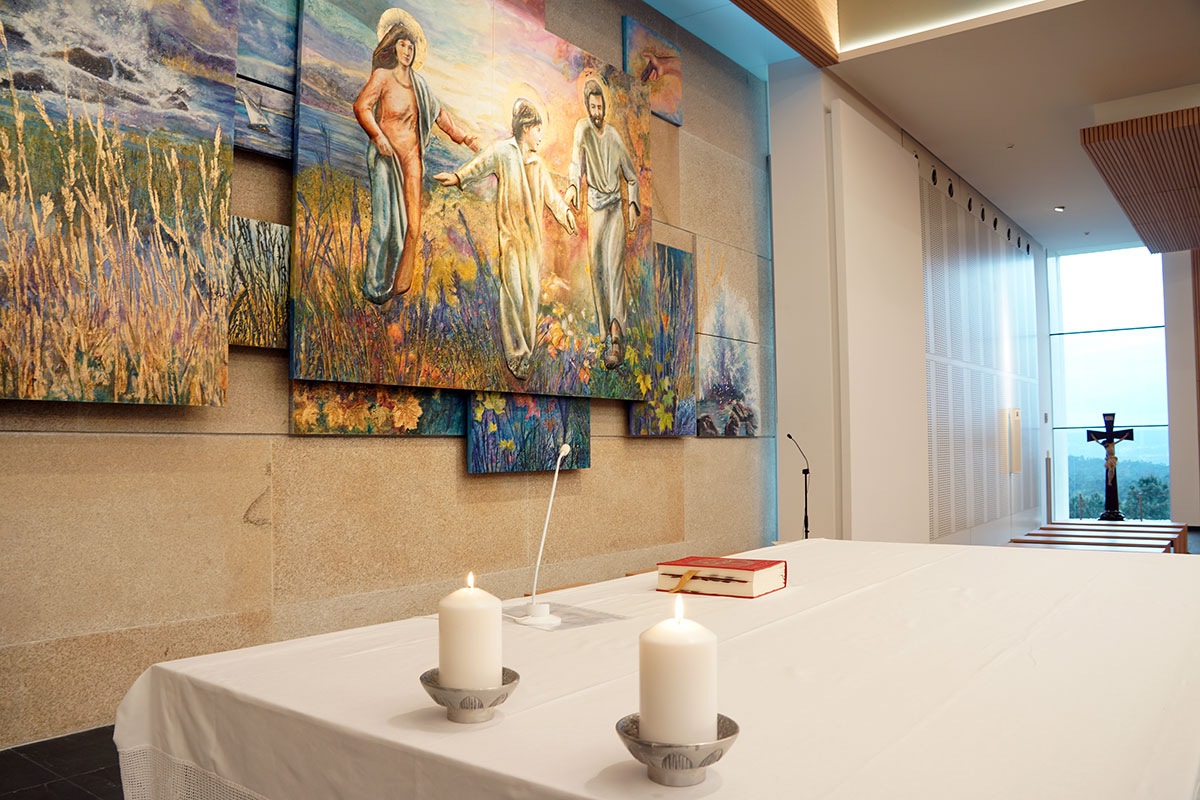
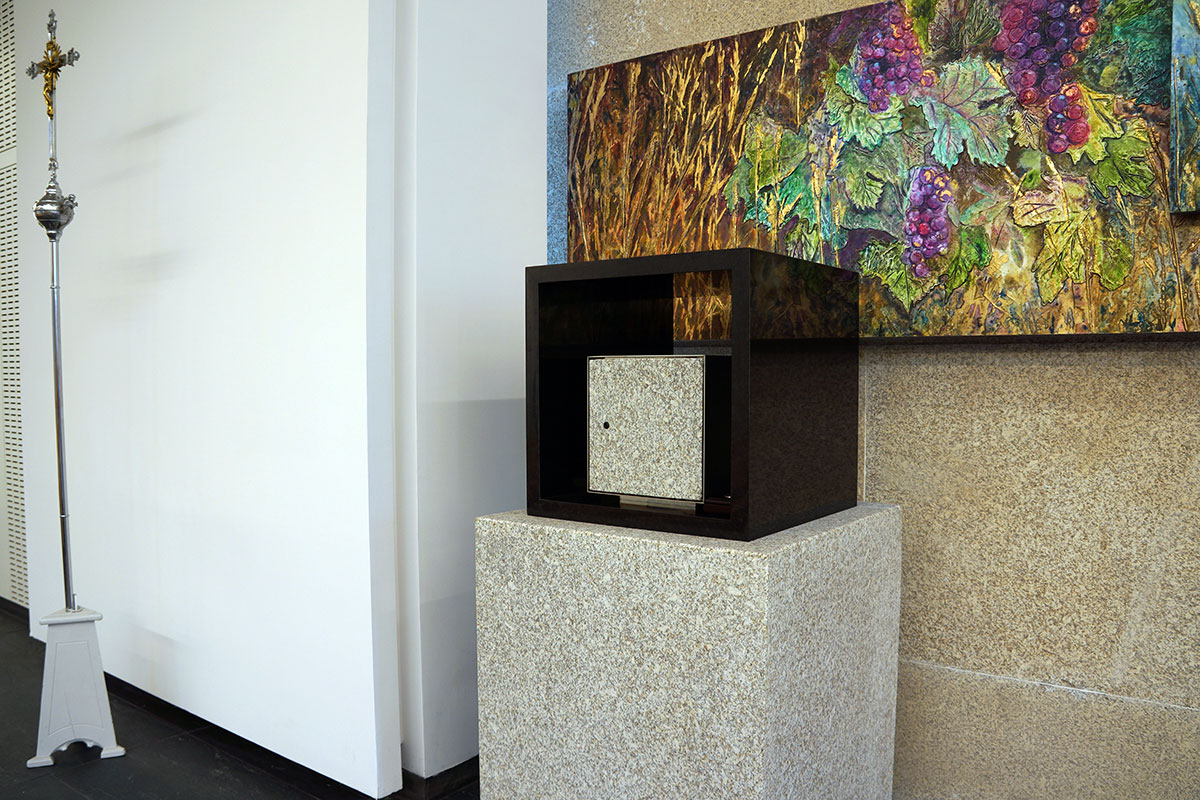
C/ Galileo Galilei, 19.
28806, Alcalá de Henares,
Madrid. Spain
info@granda.com
(+34) 91 802 36 55

C/ Galileo Galilei, 19.
28806, Alcalá de Henares,
Madrid. Spain
info@granda.com
(+34) 91 802 36 55